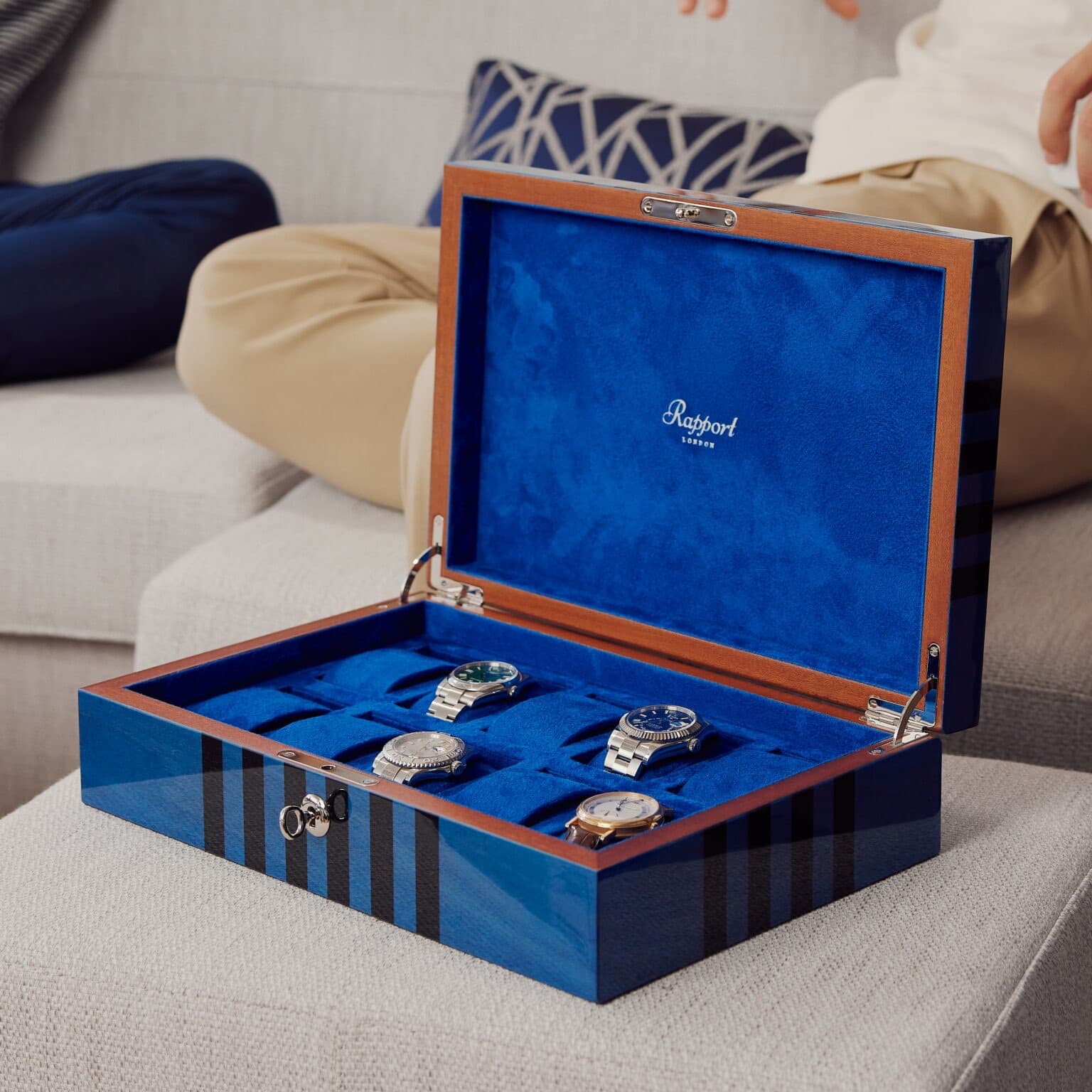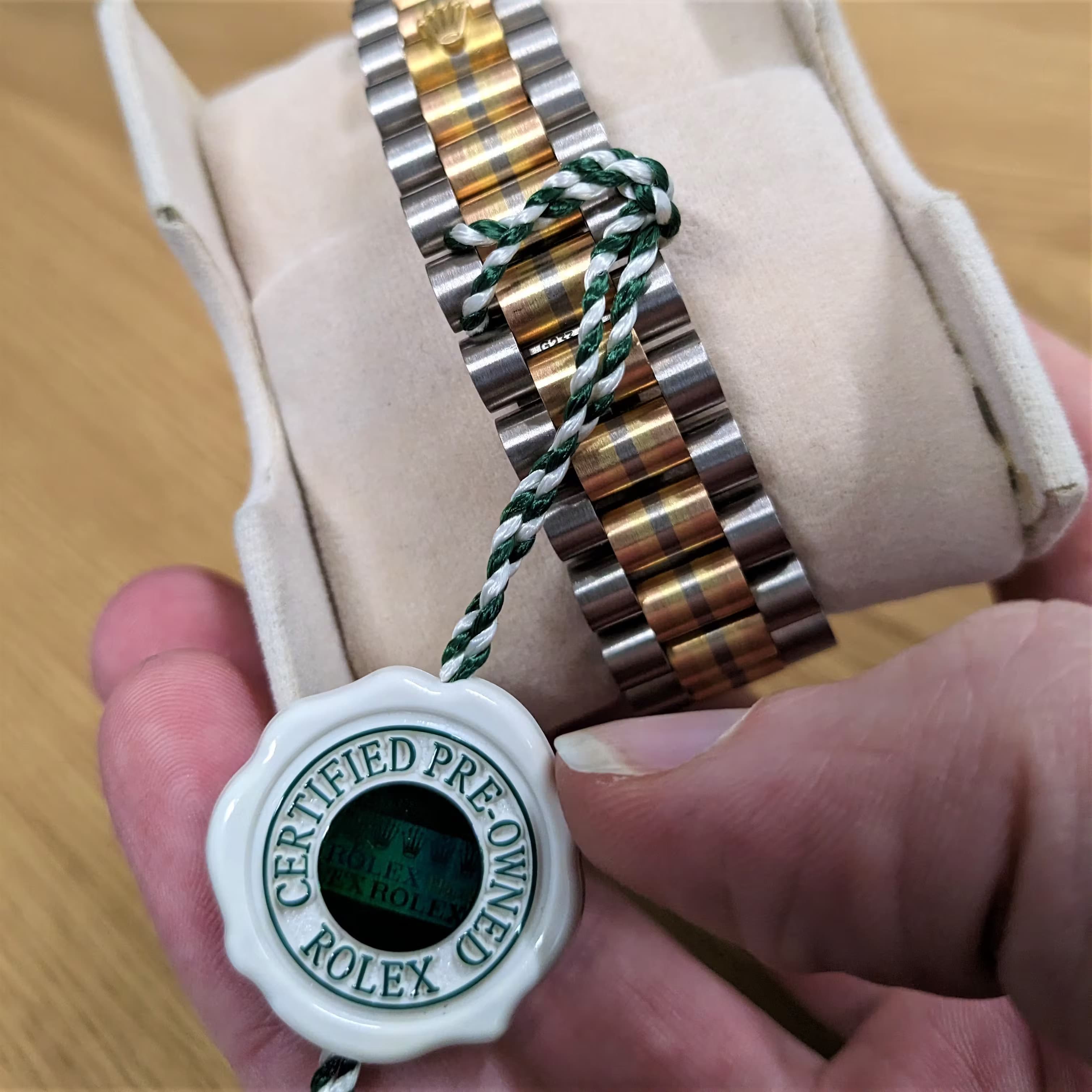Author: John O’Connor
I own exactly one vintage watch, a 1965 Patek Philippe Gondolo. Most of my experience in buying vintage goods is in buying and selling vintage guitars. Interestingly, I found out all the same rules apply! As The Watch Collectors’ Club hold a variety of events focussing on vintage watches where you can learn all about them and how to buy them, here are some of my best practices and tips on searching for your own vintage pieces.
1. Do Your Research
Know exactly what you want, what’s the ideal and what you can or can’t compromise on.
The first part of the hunt is a little bit like dating! It’s all about figuring out what your preferences are before making a big commitment.
For some, they’ll know 100% what they want down to the make, model, year of production and reference number. As an example: You want a specific Rolex Submariner, reference number 16610 from the year 1987 (many choose birth year watches when buying vintage), with a black “No Date” dial. Great! You can proceed to step 2.
For others, there might be some wiggle room. In my case, I would love a Cartier in yellow gold but I’m open minded when it comes to other square or rectangular watches. In this case, the yellow gold Cartier Tank Louis is my ideal watch. When it comes down to brass tacks though, what I’m really after is a thin, square, yellow gold dress watch. The Tank is over 100 years old and will be around long after I’m gone. I could buy a new one anytime in the future.
 square gold patek philippe watch on black leather strap on a wooden table
square gold patek philippe watch on black leather strap on a wooden table
What else might be out there then that fits my brief? Google your choices, literally ‘Cartier Tank alternatives,’ ‘vintage yellow gold square watches’ and ‘Swiss dress watches vintage’ are all typical examples of early searches I put into Google. Once I had a few alternatives in mind, I then thought about what I wasn’t prepared to compromise on; the Movement, or mechanism.
Up until this point I’d only owned automatic or quartz watches. I knew I wanted to try a manually wound watch this time. It was a new experience for me and I was drawn to the idea of a thinner watch case, on account of the thinner movement. This meant I could refine my online searches on reseller websites like Watchfinder or Chrono24, searching by movement type and case material.
2. Buy the seller, not the watch.
What does this mean today with so many options online and instore?
Essentially this means how confident are you in the seller? This gets easier with practice. Let’s start with the Authorised Dealers. This is the term for the official retailers of a brand. Many of these boutiques will take trade-ins or buy vintage watches from the brand they sell. These can often be serviced, polished and put on display alongside modern offerings.
Somlo London, the recent venue for an event for Members of The Watch Collectors’ Club, are the only authorised vintage Omega seller in the world. This is a very unique position to be in, with Omega themselves giving their approval to the watches on sale. Similarly, Rolex have recently acquired the retailer Bucherer. They’re now selling vintage Rolexes here through their Certified Pre-Owned programme, which authenticates and warranties some of the best examples in the space. These are both cast-iron ways to secure your watch.
Usually you need to find a vintage watch dealer without an official relationship to a brand. This could mean an in-person store or online. Well-known names like David Duggan in Burlington Arcade and locations such as the Arcade or Hatton Garden tend to lend credibility to a seller in London, for example. Reviews and testimonials with a strong web presence are good markers here. Websites like Watchfinder do a lot of the authentication and sourcing for you, leaving you with a catalogue to refine and filter.

Chrono24 or eBay is where I’d advise being more discerning. I’ve bought most of my lightly used watches this way. You can verify sellers and solo watch enthusiasts here alike. For individual resellers, this is where buy the seller comes in. How are the photos? Do we have multiple angles with close-ups? In what condition is the watch being labelled?
Usually, there’ll be a scale of fair, good, excellent, mint/unworn. These are self-explanatory, but fair will tend to mean scratches and maybe even chips or dents. Some watches will be described as ‘non-running’ too, so be wary at the lower end of this scale. Another factor to consider is ‘originality.’ Are all the parts genuine? Have hands or the dial been replaced? This can be a detractor for some who want an all original watch. Others are reassured by replacement parts as it shows the watch has been serviced. What matters is what you feel happy with! My watch didn’t come with the original strap, for example. It came with a Camille Fournet alligator leather strap. It did, however, still come with the original pin and buckle from Patek Philippe. This was all disclosed by the seller and I was shown the hallmarks on the buckle to support this. No reputable seller should shy away from these details.


Personally I tend towards excellent for condition. To have a mint or unworn vintage watch actually kind of worries me as I’d not want to take on a watch that hasn’t been running for quite some time. Oils in the movement can dry out and there’s a chance that you’re the guinea pig for uncovering any mechanical gremlins. Excellent tends to mean that whilst not completely perfect, the watch has been looked after reasonably well. Any defects are usually linked to aging or sunlight rather than any war wounds on the case. Imperfections should be disclosed by the seller on the advertisement and at the point of sale. Photos of the watch, if online, should detail these with well-lit pictures. Know what you’re happy with. I wasn’t prepared to take on a watch that had been overly polished. I wanted a square watch with straight edges. Smoothing these off with a polish to buff the gold was a no-go area for me. For others, a light polish to get a steel bracelet sparkling like new is welcomed.
3. Box and papers
This part is interesting when it comes to vintage watches. Many websites and shop fronts selling vintage websites will specify whether a watch comes with its original box and papers. Papers refers to the written proof of the watch being genuine, usually complete with a serial number to identify that specific watch. This number can be sent to the brand itself to confirm that it’s genuine. It can also be cross referenced with services like The Watch Register to determine whether or not the watch has been stolen. These documents could be forged, but I see two main benefits to purchasing a watch with box and papers;
Someone who kept these in good nick over the years is probably someone who looked after the watch. It reflects very well on the seller.
Buyer confidence is increased (along with a small price premium) if you ever chose to sell it on.
A lot of it will be age and brand dependent. Let’s say you’re after a ‘nearly new’ Tudor Black Bay 58, as an example of a widely traded modern watch. You’d expect the seller to have the box it came in, with the more modern warranty card (a plastic alternative to papers) intact. The watch is a few years old at most. But what happens when the watch is approaching 60 years old in my case, or more?
 a watch at the top of an envelope on a table, with the envelope featuring the barnd name patek philippe
a watch at the top of an envelope on a table, with the envelope featuring the barnd name patek philippe
After 60 years, the box and papers may well be weathered and worn. Faded and scuffed by the ravages of time or relocation. In some cases, lost completely! In my case, whilst I had the original papers from the 1960s they were very faded and delicate. They were almost a vintage relic in and of themselves. On top of the reassurance they gave me, I honestly just really clicked with the whole idea of holding the same papers that another watch lover once held in 1965!
There was no box with this watch. For a newer watch, I might see this as a red flag, but I can understand losing a box along a 60 year stretch. Particularly if it’s passed through several owners. A few house moves and we lose a lot in being ruthless!
What reassured me though was that it came in a ‘service pouch.’ These are small, usually leather or textile pouches used to return watches from servicing. This did wonders for my confidence in purchasing the watch. This meant that the watch been serviced relatively recently (the pouch had a business card with a QR code, decidedly not 1960s!). This confirmed it had passed under the watchful eyes of Patek Philippe staff in Geneva. It was received, authenticated, worked on and sent back. If anyone can spot a fake it’ll be the people working on these watches all day long! I’d suggest being open-minded on the box, depending on age, but give papers some thought.
 a watch, a watch pouch in black leather, and a certificate of authenticity form patek philippe with the numbers obscured
a watch, a watch pouch in black leather, and a certificate of authenticity form patek philippe with the numbers obscured
I’m certainly no expert, but I hope these tips help you! Hamish and Ed, Co-Founders of The Watch Collectors’ Club, are seasoned veterans at hunting for vintage pieces. They’ll be equipped to answer most questions, hopefully this bridges the gap for those starting out.
Continue exploring
Dive into more content from The Watch Collectors Club.







